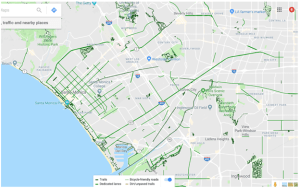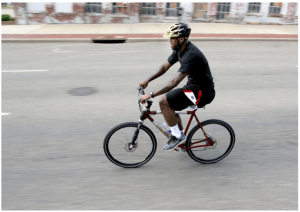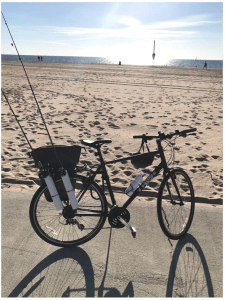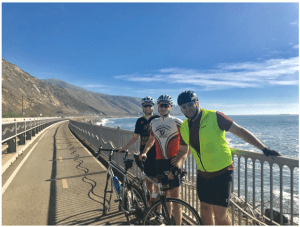Post date: Dec 31, 2018 5:56:59 PM
First, I apologize for the infrequency of updates — my ‘free’ time to write has been curtailed significantly by a host of new professional duties. From here forward, I expect/hope to post at least quarterly — this entry is the Fall 2018 quarter’s.
This quarter’s post on cycling — both for commuting and recreation — was inspired in part by a recent article proclaiming LA as “the worst bike city in America.” The article itself is a bit tongue-in-cheek and clearly intended to be provocative. It begins with perhaps the most important point, namely that LA has “all the ingredients to be the best city for cyclists in the entire United States,” largely because of its ‘Goldilocks’ weather. In fact, after cycling in LA almost daily for about 18 months, I can attest that never — not once! — have I felt excessively cold or hot during a ride (most of which happen around dawn and dusk).
The main point of the article, however, is that the convergence of automobiles and cyclists in LA tends to favor cars in both custom and policy, thus making LA relatively less safe and inconvenient for cyclists. This essayist seems to agree wholeheartedly with this point of view. One of the major issues with cycling in LA relates to the disjointed network of bike lanes and paths throughout the city. In my case, most of my cycling happens on the Westside, which is shown in the following Google Maps screenshot with cycling route overlays.
First, I apologize for the infrequency of updates — my ‘free’ time to write has been curtailed significantly by a host of new professional duties. From here forward, I expect/hope to post at least quarterly — this entry is the Fall 2018 quarter’s.
This quarter’s post on cycling — both for commuting and recreation — was inspired in part by a recent article proclaiming LA as “the worst bike city in America.” The article itself is a bit tongue-in-cheek and clearly intended to be provocative. It begins with perhaps the most important point, namely that LA has “all the ingredients to be the best city for cyclists in the entire United States,” largely because of its ‘Goldilocks’ weather. In fact, after cycling in LA almost daily for about 18 months, I can attest that never — not once! — have I felt excessively cold or hot during a ride (most of which happen around dawn and dusk).
The main point of the article, however, is that the convergence of automobiles and cyclists in LA tends to favor cars in both custom and policy, thus making LA relatively less safe and inconvenient for cyclists. This essayist seems to agree wholeheartedly with this point of view. One of the major issues with cycling in LA relates to the disjointed network of bike lanes and paths throughout the city. In my case, most of my cycling happens on the Westside, which is shown in the following Google Maps screenshot with cycling route overlays.

What the map shows is that the paths to and from the beach (SW-NE lines) are quite direct and unimpeded, but that the orthogonal paths (NW-SE) are highly fragmented. For those riding to and from UCLA (typically in the NW-SE direction based on population density) reaching campus requires much planning and experimentation to find the most direct and safest routes.
Of course, this issue is well known, and many have tried (and begun) to address it, but for cyclists, a 90% solution is only marginally better than no solution at all. Nevertheless, those of us hoping for progress remain optimistic, particularly because a newer Westside resident is also a passionate cyclist (Dear Los Angeles: LeBron James is an avid cyclist. Please don’t run him over).

One essential ingredient to progress is that political leaders must start to put action behind their stated principles. In this case and particularly with the dramatic proliferation of rented e-scooters, we need to be proactive and adaptive to innovations, especially those that obviously and dramatically decrease environmental pollution, gridlock, and climate change potential — and we need to start locally so that we can first lead by example in the quest for broader changes nationally and globally. A good example of this type of local leadership is the Great Streets pilot project in my home neighborhood.
In addition to commuting, the LA/SoCal region offers tremendous opportunities for recreational cycling. For example, I recently made fishing pole attachments to my bike’s rear rack, thus eliminating the time, expense, and emissions associated with driving to the beach and finding a parking spot (and also allowing much better mobility once I’m there).

Further outside LA proper, cyclists can find a wide range of great rides, for example along the coast toward Santa Barbara, as in the picture below.

In closing, while LA certainly has room to improve for cyclists, its weather and nearby attractions are amazing and relatively easy to access. For me, the move to LA resulted in a dramatic increase in cycling (mostly as a commuter), as indicated in this 2018 summary montage video from my Strava feed, and even better riding awaits in 2019 and beyond!
